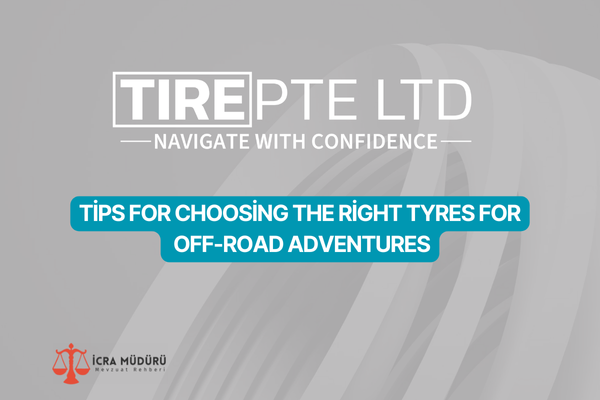Tips for Choosing the Right Tyres for Off-Road Adventures

- Tips for Choosing the Right Tyres for Off-Road Adventures
- Why Off-Road Tyres Matter
- Key Considerations When Choosing Off-Road Tyres
- Terrain Type
- Tyre Size and Load Rating
- Tread Design and Pattern
- Sidewall Strength
- Tyre Durability
- Tyre Pressure
- Budget and Brand Reputation
- Final Thoughts
Off-road adventures are an exciting way to explore nature, but they come with their own set of challenges that require the right preparation. One of the most important aspects of preparing your vehicle for off-road excursions is ensuring that you have the right tyres. Off-road tyres are designed specifically for rugged terrain, offering better traction, durability, and handling in harsh conditions. Whether you’re traversing rocky paths, sandy dunes, or muddy trails, choosing the right tyres is essential for ensuring safety, performance, and comfort.
In this article, we will guide you through the key factors to consider when selecting the ideal tyres for your off-road adventures.
Why Off-Road Tyres Matter
Unlike regular road tyres, off-road tyres are built to endure the challenges of uneven, rocky, muddy, or sandy terrain. They feature deeper treads, reinforced sidewalls, and unique rubber compounds that allow them to perform effectively in off-road conditions. Without the right tyres, even the most capable 4×4 or off-road vehicle may struggle to navigate the terrain, leading to poor performance, increased wear, or even accidents. Therefore, selecting the correct off-road tyres can make all the difference between a fun adventure and a frustrating experience.
Key Considerations When Choosing Off-Road Tyres
When selecting tyres for off-road driving, several factors must be taken into account. These factors will ensure that your tyres offer the best possible performance and safety for your specific needs. Here are some of the key aspects to keep in mind:
Terrain Type
The type of terrain you plan to drive on is perhaps the most important consideration when choosing off-road tyres. Different terrains require different tyre designs and features. Here’s what you need to know about tyre performance on various surfaces:
- Mud and Sand: When driving on mud or soft sand, you’ll need tyres with large, deep treads. These tyres help to push the vehicle forward while avoiding sinking into the soft surface. The larger and more spaced-out tread blocks allow for better grip and flotation, preventing you from getting stuck. Look for tyres with wider widths to distribute the weight more evenly across the surface.
- Rocky Terrain: For rocky terrain, the tyre’s durability is key. Look for tyres with reinforced sidewalls to withstand the impacts and abrasions from sharp rocks. The tread pattern should also be more moderate to provide the right balance between grip and stability when traversing rocky paths. Rock crawling tyres tend to have a more solid and tighter tread for better traction.
- Desert and Dunes: When venturing into the desert, tyres need to have an ultra-wide footprint to stay afloat on soft, shifting sands. Low-profile tyres with a minimal tread depth work best for desert conditions, as they help to spread the vehicle’s weight across the surface, preventing it from getting bogged down.
- Snow and Ice: For snowy or icy terrain, tyres designed for winter conditions are essential. These tyres use a softer rubber compound and a more aggressive tread pattern that can grip slippery surfaces better. If you live in an area with snow, investing in winter tyres is highly recommended for your off-road excursions during colder months.
Tyre Size and Load Rating
Selecting the right tyre size is crucial for maintaining vehicle stability and performance. Tyres that are too large or too small can compromise your vehicle’s handling, fuel efficiency, and safety. Ensure that the tyre size you select matches the specifications provided by your vehicle’s manufacturer.
Tyre load ratings are also important. The load rating indicates the maximum weight a tyre can carry safely. Off-road adventures often require additional gear or passengers, so make sure your tyres are rated to handle the added load. Overloading your tyres can cause excessive wear, poor handling, and even tyre failure.
Tread Design and Pattern
The tread design plays a significant role in how well your tyres perform on different surfaces. Off-road tyres come in three main types: mud-terrain (MT), all-terrain (AT), and hybrid tyres. Understanding the differences between these tyre types will help you choose the right one for your adventure:
- Mud-Terrain Tyres (MT): Mud-terrain tyres have large, aggressive treads that are specifically designed to handle loose, muddy, and sandy surfaces. They provide excellent grip in challenging conditions, but they can create more road noise and reduce comfort when driving on paved roads. They’re perfect for serious off-roaders who frequently encounter deep mud or rugged trails.
- All-Terrain Tyres (AT): All-terrain tyres are more versatile, providing a good balance of on-road comfort and off-road performance. These tyres have a more moderate tread pattern that performs well in a variety of conditions, from gravel roads to dirt trails. They’re an ideal choice for those who plan to do a bit of off-roading but still need tyres that perform well on highways and city streets.
- Hybrid Tyres: Hybrid tyres combine elements of both MT and AT tyres, offering enhanced traction for off-roading while maintaining better comfort for on-road driving. If you want a versatile tyre that can perform well in diverse conditions, hybrid tyres may be the right choice.
Sidewall Strength
The sidewall is the part of the tyre that connects the tread to the rim. Off-road tyres often encounter sharp rocks, branches, and other obstacles that can puncture or damage the tyre. Therefore, the sidewall strength of the tyre is an important factor to consider. Look for tyres with reinforced sidewalls or puncture-resistant technologies that can prevent damage when driving through rough and abrasive surfaces.
Tyre Durability
Durability is critical when selecting off-road tyres. Off-road terrain is often harsh, and tyres need to be able to withstand rough conditions without showing excessive wear. Some tyres are designed with stronger materials, such as Kevlar or steel belts, that make them more resistant to punctures and abrasions. If you’re planning on extended off-road adventures, it’s worth investing in high-durability tyres that will last longer and provide reliable performance.
Tyre Pressure
Proper tyre pressure is crucial for optimal off-road performance. When you’re driving on soft terrain like sand or snow, lowering the tyre pressure slightly can increase the tyre’s surface area and help distribute the vehicle’s weight more evenly, preventing you from getting stuck. However, you should never deflate your tyres too much, as it can lead to reduced performance and damage to the tyre.
Many off-road enthusiasts carry a portable air compressor to adjust tyre pressure on the go, depending on the terrain. Always check the recommended pressure for your specific tyres and conditions before heading out.
Budget and Brand Reputation
While it may be tempting to choose the cheapest option, quality should be a primary consideration when selecting off-road tyres. Investing in reputable brands known for high-quality off-road tyres ensures that you get durability, performance, and safety. It’s better to spend a bit more upfront on quality tyres than risk an off-road failure due to subpar options.
Several well-known brands offer off-road tyres that have been rigorously tested and engineered for tough conditions, including brands like Michelin, Goodyear, and BFGoodrich.
Final Thoughts
Choosing the right tyres for off-road adventures is crucial for ensuring a safe and enjoyable experience. Consider the terrain type, tyre size, tread design, sidewall strength, and durability when making your decision. With the proper tyres, you’ll be well-equipped to handle anything that comes your way, whether it’s rocky terrain, muddy trails, or sandy dunes. Always prioritize quality and safety, and make sure to select tyres that match your off-roading needs and vehicle specifications.
By understanding the key factors involved and making an informed choice, you can enjoy your off-road adventures with confidence, knowing that your tyres will perform at their best.






